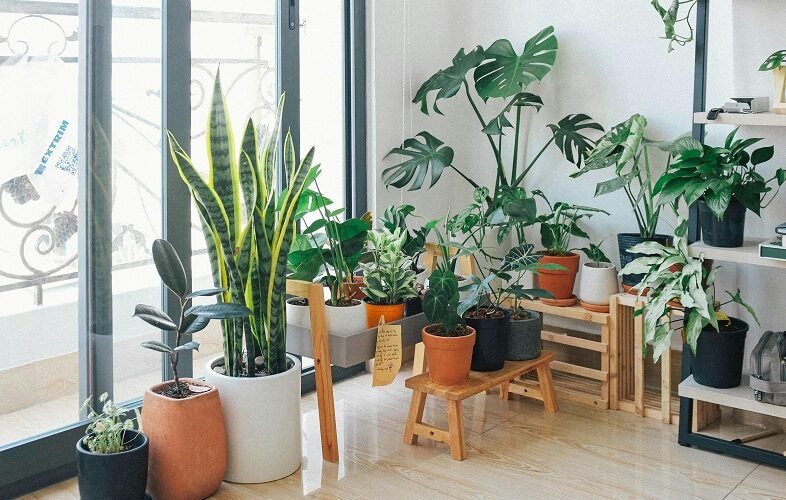– Sujata Muguda, Shreyas WebMedia Solutions
12 June 2024: Indoor plants have become more than just decorative accents in our quest for better air; they are now acknowledged as natural air filters. Because they relied on synthetic materials and carefully sealed windows, modern homes frequently contain more pollutants than we think. Paints, furniture, and construction materials all release volatile organic compounds (VOCs) into our homes, including benzene, formaldehyde, and trichloroethylene. These substances may have harmful long-term health impacts, from headaches and lightheadedness to more severe ones.
Enter the humble houseplant, a powerful ally in the fight against indoor air pollution. A study by NASA in the late 1980s provided scientific backing to the air-purifying capabilities of indoor plants, revealing that certain species can absorb harmful toxins and convert them into harmless substances. The research highlighted that plants like the spider plant, snake plant, and bamboo palm are particularly adept at this task.
Some of these botanical air purifiers and their specific benefits:
Spider Plant (Chlorophytum comosum): Known for its resilience and ease of care, the spider plant is a champion at removing formaldehyde and xylene from the air.
Snake Plant (Sansevieria trifasciata): With its striking vertical leaves, the snake plant is not only a visual delight but also a robust purifier, especially effective against benzene, formaldehyde, trichloroethylene, and xylene.
Bamboo Palm (Chamaedorea seifritzii): This tropical plant adds a lush green touch to any room and excels at filtering out benzene and trichloroethylene.
Peace Lily (Spathiphyllum ‘Mauna Loa’): The peace lily’s elegant white blooms bring serene beauty to your home while it works hard to eliminate ammonia, benzene, formaldehyde, and trichloroethylene.
Aloe Vera: Beyond its well-known skin-healing properties, aloe vera can help clear formaldehyde and benzene, which are byproducts of chemical-based cleaners and paints.
Dracaena: This diverse genus of plants has several species that can tackle pollutants like benzene, formaldehyde, and trichloroethylene.
Philodendrons: With their heart-shaped leaves, philodendrons are not just a symbol of love but also a practical addition to your home for filtering out formaldehyde.
Ficus/Weeping Fig (Ficus benjamina): This low-maintenance plant can help filter out pollutants that typically accompany carpeting and furniture such as formaldehyde, benzene, and trichloroethylene.
English Ivy (Hedera helix): Ideal for spaces with limited sunlight, English ivy is proficient at reducing airborne fecal particles and filtering out formaldehyde.
Gerbera Daisy (Gerbera jamesonii): Brighten up your room with this flowering plant that is effective at removing trichloroethylene and benzene.
While the presence of plants can contribute to a healthier indoor environment, it is important to note that they are part of a broader strategy for improving air quality. Adequate ventilation and the avoidance of products that emit high levels of VOCs should also be part of your clean air plan.
Don’t worry if you’re wondering if keeping indoor plants will be feasible. Numerous plants mentioned above are well-known for being hardy and requiring little upkeep. They require little maintenance to thrive, so even people without green thumbs can use them.
To sum up, adding indoor plants to your home is an easy yet powerful technique to improve the quality of the air. They not only add a little of nature to our inside spaces, but they also put out the endless effort to purify the air we breathe. Accept these all-natural air purifiers and relax knowing that your house is not only gorgeous but also healthier.






